Ahmad Rashid rose to prominence after the Marxist-leninist insurgency in Baluchistan. He was part of the marxist nucleus which was fighting in Baluchistan. Another young man in this group was Najam Sethi who along with Tariq Ali are considered first of the “New Left” in Pakistan. Those who introduced Trotsky’s writings for the first time in Pakistani Left wing (which was hard core Stalinist and Maoist in those days). Both Rashid and Sethi soon quit being revolutionaries and emerged as seasoned political commentators and analysts operating in the “Post-marxist” paradigm. Amongst them Rashid is more academic, his work on Taliban and United States policy towards Afghanistan and central Asia is considered authoritative. He is perhaps the most objective analyst on Afghanistan and Pakistan. In the following article he puts Salman Taseer and Shahbaz Bhatti’s murders in perspective . While its fundamental to criticize the role of military establishment the abject surrender by Zardari regime should never be underestimated. Its the vacum being left by the weaker “political establishment” which is being filled in by the proto-fascist elements. This sense of proportion is lacking in most progressive analysis coming from Pakistan but Ahmad Rashid’s highly analytical mind superbly achieves this balance. This is without any question one of best writing on recent crisis of Islamic Republic.
Shaheryar Ali
Ahmad Rashid : New York Review of Books Blog (With Thanks)
The assassination on Wednesday of Shahbaz Bhatti, Pakistan’s Federal Minister of Minorities, killed in broad daylight in Islamabad by four gunmen, is one of the most shameful acts of political violence committed by Pakistani extremists. That it comes just two months after the murder of Salman Taseer, the Governor of Punjab and one of the country’s leading liberal voices makes it all the more chilling. Yet the government and state’s reaction to the two killings has been even more shameful—raising the disturbing possibility that extremism is still being used by the security services in its efforts to oppose Western policies in the region.
The 40-year-old Bhatti was a Roman Catholic and the only Christian member of the cabinet of Prime Minister Yousf Reza Gailani. It was a death foretold. Taseer had been assassinated for his courageous struggle to amend Pakistan’s blasphemy law, which has been used to persecute minorities—a struggle to which Bhatti had also dedicated himself. Bhatti made a videotape some months ago that he wanted released to the BBC if he was killed. In it he said he would carry on the campaign to amend the blasphemy law.
“I will prefer to die for the cause [of defending] the rights of my community rather than to compromise on my principles,” Bhatti said in the tape. “The forces of violence, militants, banned organizations, Taliban and al-Qaeda, want to impose their radical philosophy in Pakistan and whosoever stands against it, they threaten him.”
 Bhatti knew his life was in danger; he had been threatened repeatedly in recent weeks and had asked the government to provide him with security and a bulletproof vehicle. But even after Taseer’s murder, the government did nothing. Like Taseer, he ended up riddled with machine gun fire—though it is unclear whether a security detail might have helped, since Taseer was shot dead by his own bodyguard, a highly trained police officer. In both cases, the killers have come from a culture that has grown increasingly intolerant in recent years, abounds in conspiracy theories, and wrongly interprets Islam solely in terms of jihad and violence.
Bhatti knew his life was in danger; he had been threatened repeatedly in recent weeks and had asked the government to provide him with security and a bulletproof vehicle. But even after Taseer’s murder, the government did nothing. Like Taseer, he ended up riddled with machine gun fire—though it is unclear whether a security detail might have helped, since Taseer was shot dead by his own bodyguard, a highly trained police officer. In both cases, the killers have come from a culture that has grown increasingly intolerant in recent years, abounds in conspiracy theories, and wrongly interprets Islam solely in terms of jihad and violence.
As leaders worldwide—from the Pope to Hillary Clinton to Nicolas Sarkozy—strongly condemn Bhatti’s murder, the reaction of the Pakistani government has been vapid. No action has been taken or promises made to curb the freedom of violent extremist groups, who have hailed both murders and who have meanwhile been staging daily street demonstrations in Lahore to demand the death sentence for Raymond Davis, the American CIA agent who is now in Pakistani custody after killing two Pakistani men believed to be agents for the army’s Inter-Services Intelligence (ISI). (Davis was part of a secret team working in the country; the exposure of his activities puts further strain on the uneasy alliance between the US and Pakistan.)
For its part, the army has so far failed to express regret about either Bhatti’s murder or Taseer’s. The army chief General Ashfaq Kayani declined to publicly condemn Taseer’s death or even to issue a public condolence to his family. He told Western ambassadors in January in Islamabad that there were too many soldiers in the ranks who sympathize with the killer, and showed them a scrapbook of photographs of Taseer’s killer being hailed as a hero by fellow police officers. Any public statement, he hinted, could endanger the army’s unity.
Behind this silence lies something more sinister. For decades the army and the ISI have controlled the extremist groups, arming and training them in exchange for their continuing to serve as proxy forces in 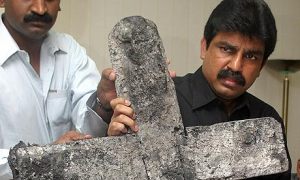 Afghanistan and Kashmir. But in recent years, the army has lost control of them and they are striking targets of their own. Yet the army has refused to help crack down on its rogue protégés—despite the fact that extremists have increasingly attacked the army and the ISI itself, and at least 2,000 military personnel have died at their hands in the past five years. This is all the more ominous in view of the resources the military commands: half a million men, another half a million reserves, 110 nuclear weapons (according to US media estimates) and one of the largest intelligence agencies in the world, the ISI, which has an estimated 100,000 employees.
Afghanistan and Kashmir. But in recent years, the army has lost control of them and they are striking targets of their own. Yet the army has refused to help crack down on its rogue protégés—despite the fact that extremists have increasingly attacked the army and the ISI itself, and at least 2,000 military personnel have died at their hands in the past five years. This is all the more ominous in view of the resources the military commands: half a million men, another half a million reserves, 110 nuclear weapons (according to US media estimates) and one of the largest intelligence agencies in the world, the ISI, which has an estimated 100,000 employees.
If the army has now surrendered any willingness to take on the extremists, the political establishment had already given up long ago. Prime Minister Gailani and President Asif Ali Zardari head the Pakistan People’s Party, the largest national party in the country—some would say the only national party left. Zardari, as the husband of slain leader Benazir Bhutto, is no stranger to extremism himself, and his populist base has traditionally voted for the party’s anti-mullah, anti-army and pro-people policies. Unfortunately those principles were abandoned by a series of corrupt and ineffectual leaders, and the PPP today is not even a shadow of what it once was.
Zardari has backtracked on foreign policy goals such as improving relations with India and Afghanistan, as well as on domestic efforts to curb the power of the extremists and impose new taxes—on almost everything that may have helped Pakistan move towards becoming a modern state. There is no doubt that the army has tried to thwart the civilian leaders at almost every turn—but rather than resist or resign, the politicians have just been brow beaten into compliance and abject submission.
As a result, there is a vicious double game playing out in the streets, fueling the tensions that resulted in Bhatti’s death. The security agencies have unleashed Lashkar-e-Taiba (LT)—the largest and most feared extremist group in Pakistan, which was behind the 2008 Mumbai attacks—on to the streets of Lahore. The group has been banned by the US, Britain and the United Nations and supposedly by Pakistan too. LT stalwarts have been demonstrating daily outside the US consulate to ensure that Raymond Davis—who was apparently charged with monitoring their activities—hangs. By giving free reign to such banned groups the security agencies may have inadvertently signaled to all extremist groups, including the sectarian groups who hate Christians, that they are free to take the law into their own hands. What is behind this complex and mind-boggling strategy? It is all part of a wider cat and mouse escalation between the US and the Pakistani military. The army wants to control any future peace talks that the US may have with the Taliban, so that the army’s aims for a future pro-Pakistan Afghan government in Kabul are met. Its leaders also want to make doubly sure that any long-term American arrangements do not leave Pakistan’s rival India in a stronger position in Afghanistan.
So far the US seems unmoved; and it has already circumvented the ISI to start indirect peace talks with some Taliban. One consequence is that the military are allowing extremist groups considered anathema to the US on the streets. This is also why Davis is not being freed, and why US-Pakistan relations are at their worst in many years. In the meantime, the army and the government continue to receive about $3 billion a year in US military and economic aid.
On March 3, Senator Bob Corker, who recently visited Islamabad, told the Senate Foreign Relations Committee that he found Pakistan “the most disheartening place in the world to be, where you are talking the type of relationship that we have.” He added, “I think that in many ways we get played like a piece of music” by the Pakistanis.
The ISI may well be playing the Americans, but it does so at the cost of steadily ceding ground to the extremists. Right now Pakistan is becoming a place where there is an army without a country.
Source: http://www.nybooks.com/blogs/nyrblog/2011/mar/04/army-without-country/
 Details magazine discussed the homosocial standards of much of Islamic culture, based on separation of the genders, and reviewed Trolley Press’ 2003 book “Taliban,” in which photographer Thomas Dworzak presented images of effeminate Taliban warriors that he unearthed.
Details magazine discussed the homosocial standards of much of Islamic culture, based on separation of the genders, and reviewed Trolley Press’ 2003 book “Taliban,” in which photographer Thomas Dworzak presented images of effeminate Taliban warriors that he unearthed. 

 A red light shone from the house’s second floor window. Had I happened on a gay brothel? There were eight men, most in their 20s and 30s, sprawled on cushions. Self consciously, I sat under a large window. Through a wall, I could hear women in the house, but I never saw them. I felt on display with so many men around me. Soon, more entered. If I were here to meet Syed, who were they?
A red light shone from the house’s second floor window. Had I happened on a gay brothel? There were eight men, most in their 20s and 30s, sprawled on cushions. Self consciously, I sat under a large window. Through a wall, I could hear women in the house, but I never saw them. I felt on display with so many men around me. Soon, more entered. If I were here to meet Syed, who were they? 
 As the night progressed, I was comfortable enough to stay over, and Ali and I slept in each other’s arms, after caressing each other for hours. I don’t think I’ll forget those nights in Munir’s house, but it provided I think only a hint at what homosocial and homosexual behavior means in Afghanistan. Afghan men have lived through hardship, killed for their country to free it from the Taliban, and treat guns like fashion accessories, but strict Islamic rule means they’ve probably never seen a woman naked.
As the night progressed, I was comfortable enough to stay over, and Ali and I slept in each other’s arms, after caressing each other for hours. I don’t think I’ll forget those nights in Munir’s house, but it provided I think only a hint at what homosocial and homosexual behavior means in Afghanistan. Afghan men have lived through hardship, killed for their country to free it from the Taliban, and treat guns like fashion accessories, but strict Islamic rule means they’ve probably never seen a woman naked.  This money has been put to use. Indeed, ever since Sept. 11, 2001, there has been a regular traffic of Pakistani military officers to and from the United States for coaching in nuclear safety techniques. While multiple layers of secrecy make it hard to judge success, the improvement in the SPD’s public relations is palpable. PowerPoint presentations, guided tours of military headquarters and calculated expressions of openness have impressed foreign visitors.
This money has been put to use. Indeed, ever since Sept. 11, 2001, there has been a regular traffic of Pakistani military officers to and from the United States for coaching in nuclear safety techniques. While multiple layers of secrecy make it hard to judge success, the improvement in the SPD’s public relations is palpable. PowerPoint presentations, guided tours of military headquarters and calculated expressions of openness have impressed foreign visitors.

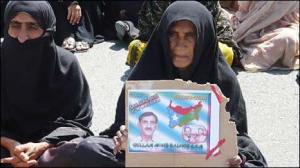
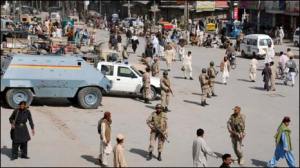
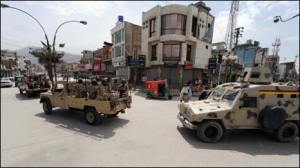
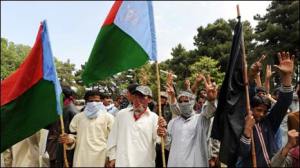 Killing of witnesses threatens the possibility of any justice regarding the large numbers of persons who have disappeared in Pakistan. These recent killings seem to indicate the mobilisation of secret units in order to eliminate those who have knowledge about the maintenance of secret prisons and torture chambers in the country. Particularly those who have taken a keen interest in pursuing justice relating to these matters have been made targets of these killings. It is likely that these killings will be followed by similar actions to others. The knowledge about these murders will also discourage victims and witnesses who want to narrate the human rights abuses they have suffered and to seek justice. The deadening silence imposed in such circumstances will obstruct all attempts to return to a normal situation of rule of law. Now with the intervention of the Supreme Court under the Chief Justice, Iftekhar Choudhry who has been reinstated by popular intervention. On the other hand the terror tactics adopted in this way will act to the advantage of the extremist elements who resort to terrorism
Killing of witnesses threatens the possibility of any justice regarding the large numbers of persons who have disappeared in Pakistan. These recent killings seem to indicate the mobilisation of secret units in order to eliminate those who have knowledge about the maintenance of secret prisons and torture chambers in the country. Particularly those who have taken a keen interest in pursuing justice relating to these matters have been made targets of these killings. It is likely that these killings will be followed by similar actions to others. The knowledge about these murders will also discourage victims and witnesses who want to narrate the human rights abuses they have suffered and to seek justice. The deadening silence imposed in such circumstances will obstruct all attempts to return to a normal situation of rule of law. Now with the intervention of the Supreme Court under the Chief Justice, Iftekhar Choudhry who has been reinstated by popular intervention. On the other hand the terror tactics adopted in this way will act to the advantage of the extremist elements who resort to terrorism Today the 3 day mourning period started in Balochistan. A complete general strike was observed in the provinces. All the educational institutions were closed and traffic on the roads was minimal.
Today the 3 day mourning period started in Balochistan. A complete general strike was observed in the provinces. All the educational institutions were closed and traffic on the roads was minimal.

















